You ever wondered how the hell Chinese people actually learn to read?
I mean, sure, English not only has way, way more actual words, but substantially more sounds too (about 400 syllabic sounds in Chinese vs about 16,000 in English). But once you learn the general rules on how to stick 26 letters together - with a few weird exceptions - you can pretty much read anything, no matter how unfamiliar the word may be.
Try it: salutiferous
Not that hard eh?
But what does 'salutiferous' actually mean? A truly educated person in etymology might be able to work it out by knowing the origins of prefixes and suffixes and such: 'salūtifer' means 'health-giving'. '-ous' meaning 'full of'.
Salutiferous = Healthy.
In general many parts of an english word's components are understood, and we can get a rough idea of its overall meaning this way, even if we have never seen the word before.
In Mainland China's written language Simplified Chinese, however, any unfamiliar character might leave you entirely in the dark. You don't know its meaning or its pronunciation.
Like in English, in many cases you can still take an educated guess, for example:
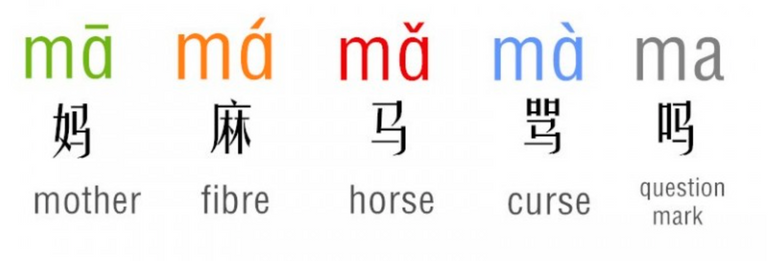
You might notice a common theme in most of these, the reoccurring 'horse' character squeezed into other more complex characters.
That's not to say Mother's are likened to horses, or horses contain a lot of fibre, nor that horses are cursed. Parts of a character do have meaning, but others hold the information of pronunciation, such as 马。
Knowing where the phonetic components of a given character are, and what they look like can give you clues. But it's no guarantee. 元 远 园 and 院 are all 'yuan', too, with their own meanings - and differing tones. The 元 part inside each one is the phonetic component you want to look out for to get clues in its pronunciation.
But there is no hint whatsoever on which tones to use for any given character. This is why Chinese is said to be so difficult to learn. It's not that complex grammatically, really, but the sheer amount of memorization through brute force is just a daunting-ass task of immense boredom.
There are 4 tones in Mandarin. In the above picture, these are displayed in the Romanized 'pinyin', the 'ma' with little lines on top of the vowel.
They're pretty intuitive, as your voice should just follow the direction of the arrows.
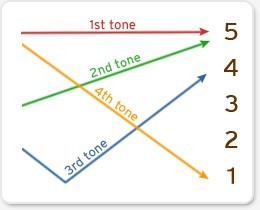
But like I said, there's no actual instruction on which of the four to use on any given character. You just gotta remember. The average Chinese can handwrite about 2,500-3,000 characters off the top of their heads (a number that's collapsing every day due to technology removing the need to write at all), and the average educated citizen knows about 8,000.
So yes, you need to brute force your way through recognizing a character, writing it and knowing its pronunciation and tone, about 8,000 times if you want to be fully literate.
And let me be clear, this is what they call Simplified Chinese.
This simplified system has only existed since about the 1950's, when the CCP decided to raise literacy by dumbing the language down (something I'm not entirely against given the annoyance of trying to learn it myself).
The problem with this, is that its an erasure of history and culture going back thousands of years. Not only does simplified Chinese reduce the quality of many characters aesthetically, but it also does away with much of the characters deeper meanings. What's worse, many characters have just been removed entirely.
Traditional Chinese - the written form used in places such as Hong Kong, Macau, Taiwan and in a way, Japan/Korea - is a whole other kettle of fish.
Friends of mine who live in these traditional places look at simplified in dismay. Not out of any political misgivings, but simply because, to them, it looks childish and hideously plain. In this, I can't say I disagree when I put them side-by-side.
At first, to the untrained eye, all Chinese characters look pretty overwhelming. There are characters so simple as 一 (that's not a hyphen, that's number 1 in Chinese), and as complex as 麤 (that's not a square block, you might have to zoom in).
But putting traditional characters next to simplified and you can start to see what's going on.
Here's the same sentence twice. Any guesses which is which?


Assuming you didn't read this sentence first, then yes you were correct, the second one is Traditional.
What you might notice is that many characters are exactly the same, while others have been bastardised into overly simple versions of themselves. And this can have a very real effect regarding the depth of meaning that can be extracted from a given character.
Take the third character for example 'shi' 的 (pronounced 'shur' kinda). Let's investigate the original form:
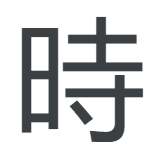
The left side has a little cabinet looking radical which means 'sun' or 'day'. The right side has two parts, top and bottom. The top part - 土 - means 'earth', while the bottom 寸 means kind of 'unit of length'.
Taking these three parts into account - Day, earth, unit of length - You can make pretty good assumptions as to the meaning of the character. Assuming you guessed correctly, the first part of the sentence is indeed discussing 'time' - 'When she was young'. Now let's compare with the Simplified form:
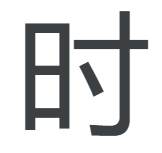
You'll notice that to increase literacy, they just did away with the top component - earth - altogether. We're now left with Sun and Unit of Length.
Obviously, it's not hard for a human to extrapolate the same meaning when it comes down to it, but one could argue that when you apply this process across the entire language, as well as the huge reduction in total characters, the subtleties that existed in this ancient language have been ravaged to become a shell of its former self.
Let's look at a more extreme version in the above sentence:
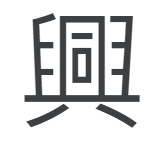
Now, granted, most characters tend to have multiple meanings. This one for example could mean 'Prosper', 'Interest' and more, depending on context (characters are more often than not paired up).
The ANCIENT, ancient version of this character looked like this:
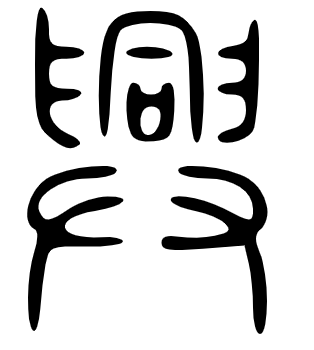
Which to me looks like an evil Bond villain expressing malicious interest in the ultimate demise of 007 himself, his fingers coming together like Mr Burns, who was certainly quite prosperous:

But imagination aside, You can directly see its origins in the form of the traditional character. Each component is still essentially present, albeit squared off a bit in computer font.
Compare this to the new, updated Simplified equivalent:

The hands have become two lines, the evil face has also become two lines, and the two murder weapons on either side of the face have become... two lines.
What depth of meaning and connotation existed in 'prosper' is now long gone.
舁 is the 'murder weapons' component making up a large part of the top half of the character, with the meaning 'to raise'.
The character squeezed in between the two - 同 - means 'together'.
The bottom two lines together, from my own experience, is typically meant as 'eight', but originally had the meaning of 'To divide'.
To divide, Together, To raise.
Some other meanings of this character when putting all components back together are:
- Revive
- Pleasure
- Entertain
- Succeed
Reading the traditional character, a reader gets a particularly positive vibe from its components - despite the evil Mr. Burns-like appearance to a westerner like me.
Perhaps the best way to experience success, pleasure, prosperity and entertainment is by becoming an evil tycoon.
The lessons you can get from this character alone!
Mainland Chinese people have had to sacrifice this depth of nuance in their daily language. The way they interpret the world around them has been stripped bare, just like the landscape they've concreted over.
Does this reduce their intelligence or ability to communicate? Probably not. like I said, humans have a way of interpreting language exactly as much as it needs to be interpreted, and raising literacy rates is hardly going to make people dumber overall. Besides, children are undoubtedly taught at least the basics of traditional characters, as they are used in certain contexts either way (on the gates of temples, for example), and it's useful to learn a language by understanding its underpinnings.
But I do wonder, in ways perhaps too hard to express in my own simple 26-lettered language, what unseen yet profound effects it has had on a society of 1.4 billion people. Do people in Taiwan and Hong Kong use certain characters differently because it holds a deeper connotation, or vibe, opting to choose something else instead?
Do English speakers think differently, for similar linguistic reasons?
I'm not interested enough to find out.
~~~ embed:1563914275902701569 twitter metadata:RXN0aGVyZW1tYTI1fHxodHRwczovL3R3aXR0ZXIuY29tL0VzdGhlcmVtbWEyNS9zdGF0dXMvMTU2MzkxNDI3NTkwMjcwMTU2OXw= ~~~
The rewards earned on this comment will go directly to the people( @gentleshaid, @esther-emmanuel ) sharing the post on Twitter as long as they are registered with @poshtoken. Sign up at https://hiveposh.com.
Interesante
Hi @mobbs. Thanks for sharing this interesting post with the community. This is all Chinese to me 😂, but it helps a lot. For better visibility and the right audience, next time I suggest Cross Culture for this type of topics, which is for languages too.
Please don't delete any post with the purpose of reposting it in another community as that can be considered abuse! Leave this post here, you'll get it right next time.
I'm not particularly interested in better visibility, just writing for my own interest ;-)
I'm also just doing my job as a community moderator, making sure OCD community rules are respected :)
Ive seen the type of shit people are allowed to post, across all communities! So this should be a welcome post whereever it ended up, it's interesting! How does one know where it belongs for sure? We didnt all go to tag school! People can and do and will post anywhere. Let the good posts through ffs. It seems a bit patronising from @erikah :/
Hahaha... best to just leave it. They have their rules and jobs. I can't get all the gold. Besides I got like 25 bucks for a random 5 minute blurb prior to this one so I can hardly complain if money was the driving factor